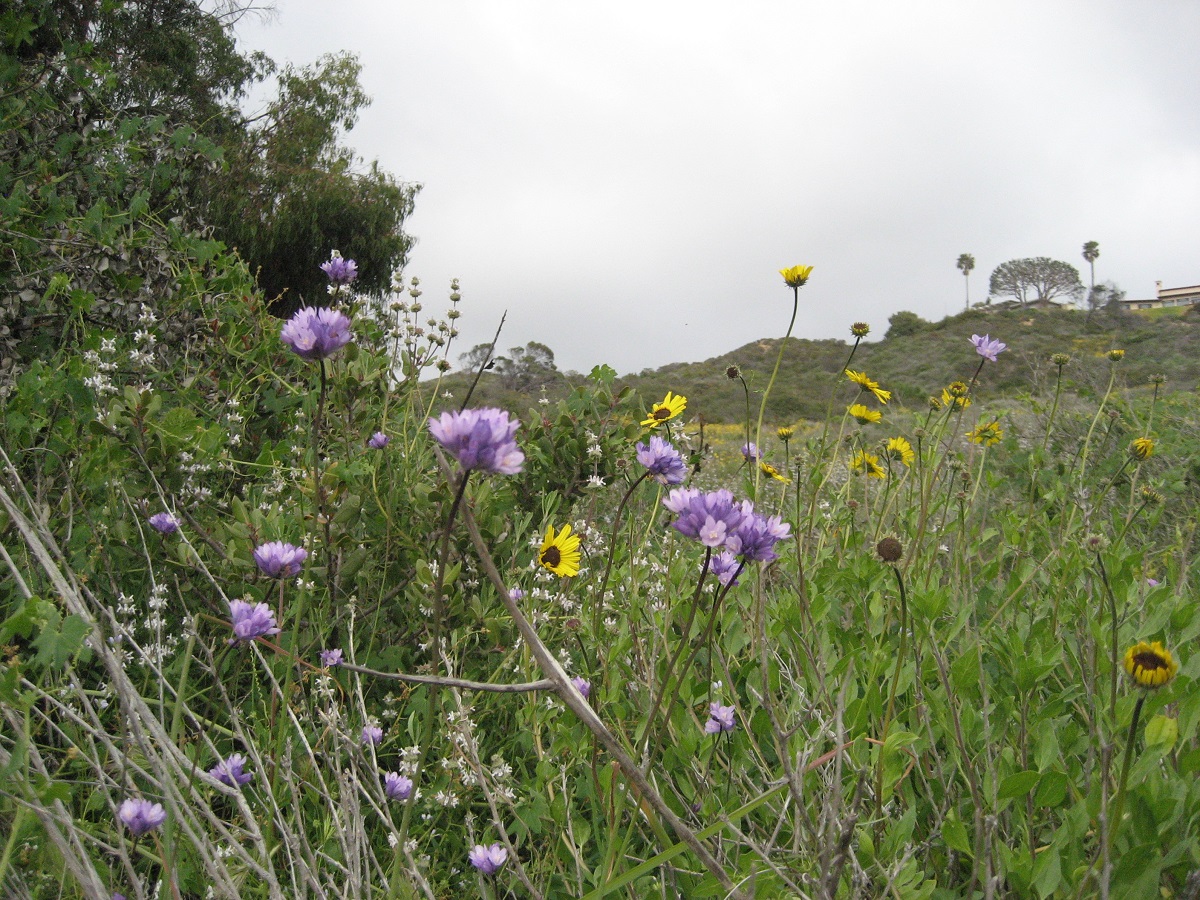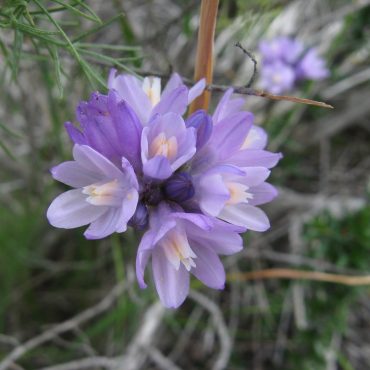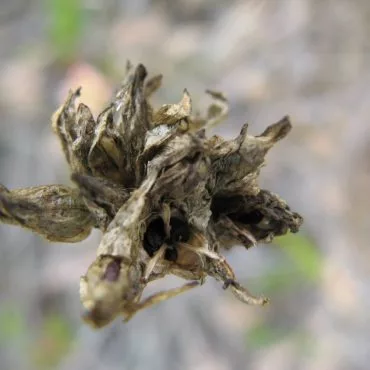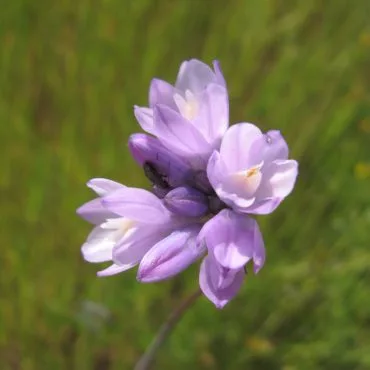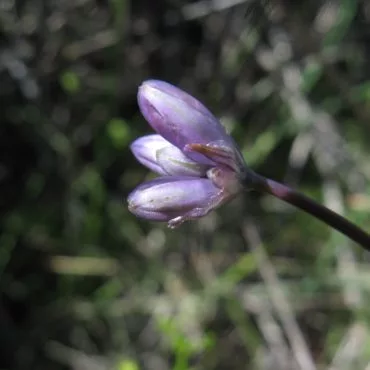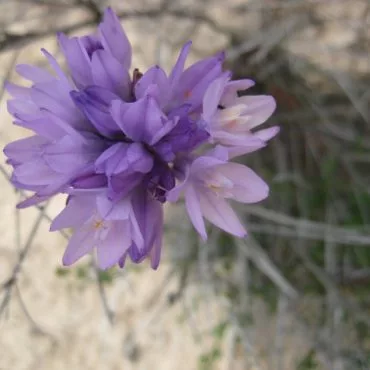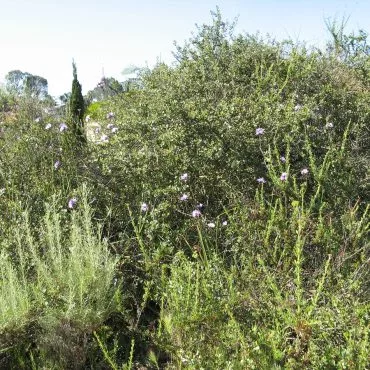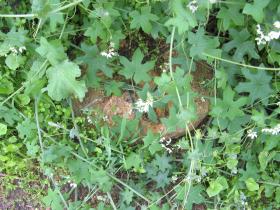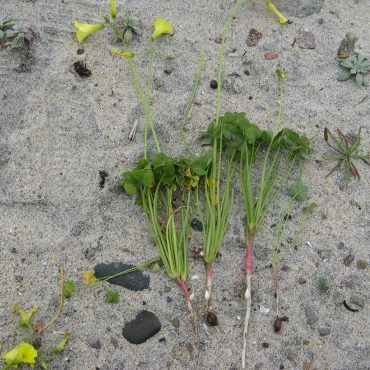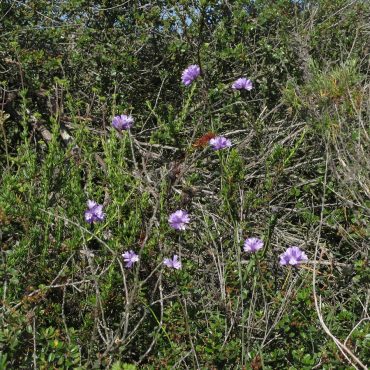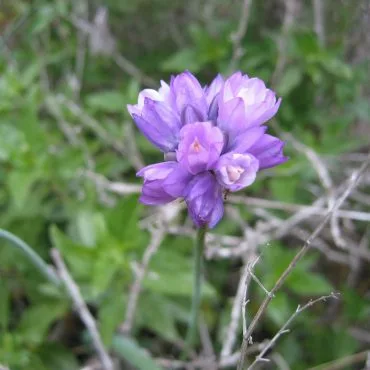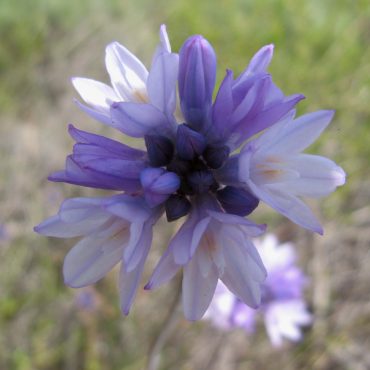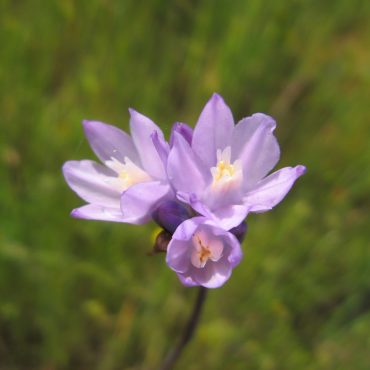“If annuals are the laughter in a garden, then bulbs are the magic and promise.”
Bornstein, Fross and O’Brien24
Blue dicks (Dichelostemma capitatum) are pretty native spring flowers with a giggle-inducing name. They are widely distributed within California and are frequently seen in open, grassy areas where the long, leafless stems bounce balls of blue-violet flowers above the surrounding vegetation.
Blue dicks grow from corms (specialized underground stems, much like bulbs), which allow the plant to go dormant during periods of environmental stress such as drought or fire. These corms are rich in carbohydrates and are prized food for a variety of animals, from bear and deer to pocket gophers. They were eaten raw or cooked by native Americans. In some parts of California, blue dick corms may have been a more important food source than acorns.

